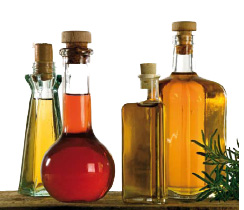Avoiding lipid oxidation in piglet diets

Weaned piglets have the ability to grow fast, but relatively low feed intake limits their genetic potential. Therefore piglet feeds have high energy content, mostly obtained by adding fats and lipids. These ingredients are sensitive to oxidation, which leads to poor palatability and has a detrimental effect on feed intake.
By Ioannis Mavromichalis, Ariston Nutrition SL, Madrid, Spain
Most high-quality piglet feeds are heavily fortified with fats and oils. There is a very good reason for it in that piglet feed intake during the post-weaning period is usually below their requirements and packing as much energy as possible in what they actually eat is the only way to enhance energy intake. At the same time, because feed intake is so limited, anything that might further depress feed intake is of paramount importance. Such is the issue of lipid oxidation that it has the potential of rendering feed highly undesirable, not only in piglets but even in older animals. Rancid feed is not only unpalatable but it is also off-smelling, both of which deter piglets from eating substantial amounts of feed post-weaning.
Different lipids oxidise differently
Oxidation of lipids, also called oxidative rancidity, is a natural reaction between unsaturated fatty acids and free oxygen. Such fatty acids exist in all fats and oils, but certain vegetable oils such as soybean and maize oil, which are frequently used in piglet feeds, are especially rich in them. For example, the ratio between saturated and unsaturated fatty acids in coconut oil is over 11, whereas in maize oil it is only 0.15, indicating the richness of maize oil in unsaturated, and thus vulnerable to oxidation, fatty acids (see Table 1).
Coconut oil is a prized source of lipids in piglet formulas, and certainly its resistance to oxidation plays a significant role in it.
Lipid oxidation is enhanced by exposure to air, light, high temperatures, and certain inorganic minerals such as iron and copper. The reaction is autocatalytic and, once started, oxidised fatty acids continue to form and peroxides, the end product of oxidation, accumulate.
Antioxidants are frequently added to most diets for young pigs that contain rather elevated levels of lipids. Antioxidants can only delay the process by stabilising reactive fatty acids, but given enough time, fatty acids will eventually react with available oxygen. Common antioxidants include ethoxyquin, butylated hydroxytoluene, citric acid, and vitamins C and E.
The last three antioxidants are usually too expensive to be used as antioxidants in most piglet diets, yet they are included in relatively high amounts, usually for different reasons, but nevertheless they do contribute to reducing rancidity.
Oxidised fatty acids, also referred to as free radicals, react not only with other fatty acids but also with amino acids rendering them unavailable to the animal. Methionine and tryptophan are particularly susceptible to oxidation by free radicals. Methionine and tryptophan are second limiting amino acids in piglet diets and they are often added in the form of crystalline amino acids to supplement natural ingredients. The oxidation of tryptophan may actually explain the otherwise hard-to-explain high requirement for this amino acid observed in some studies, but not repeated in others.
Furthermore, lipid oxidation caused during steam flaking reduces bioavailability of methionine and tryptophan in wheat, rye, barley and oats by as much as 26%, and this again contributes to higher ‘apparent’ requirements for these amino acids.
Off flavour
Of course, the most important side-effect of rancidity is the creation of objectionable flavours such as “fishy” or “beany” flavour in oils rich in linoleic and linolenic fatty acids (e.g., soybean, rapeseed and fish oils). This process, called reversion, can take place even under anaerobic conditions and currently, there is no way to prevent it.
It is evident that with most starter diets being enhanced with fats and oils to increase energy intake in pigs and facilitate the pelleting process, lipid oxidation can easily become problematic. Increased rancidity in choice white grease (lard), added at 6% of the diet, linearly depresses growth rates and feed intake in weaned pigs that were fed complex starter diets. Thus, dietary concentrations of peroxides should not exceed 240 mEq to prevent depression of growth performance.
Although peroxide analysis is a valid index of rancidity it does not provide all information required to assess the oxidative status of feed and lipids. Other common tests include analyses for malonaldehyde and thiobarbituric acid (TBA). A combination of all three tests is usually required to provide a complete picture of oxidation state. In practical terms, it is important to buy high quality sources of lipids destined for piglet formulas. Such fats and oils usually come fortified with an antioxidant, but further fortification is required in feed, and the inclusion level should take into account the initial state of oxidation, the presence of reactive components in the formula, and the expected storage of feed under anticipated degrees of temperature before consumption.
At the farm level, to prevent feed from oxidising rapidly, it pays to keep feed bags sealed and outside the hot nursery rooms, preferably in a shaded area. And certainly, during the summer months, feeding little and often will ensure that feeders are not overfilled with feed that quickly turns unpalatable. It is also a good idea to limit feed orders in what can be consumed in a month or even less.











